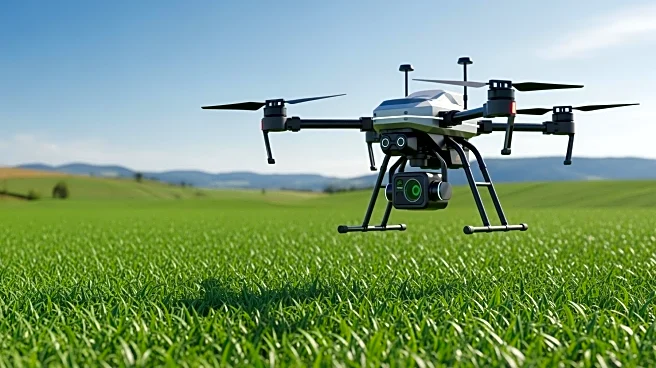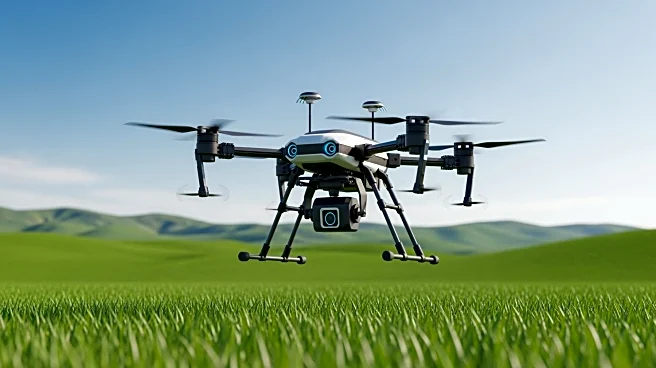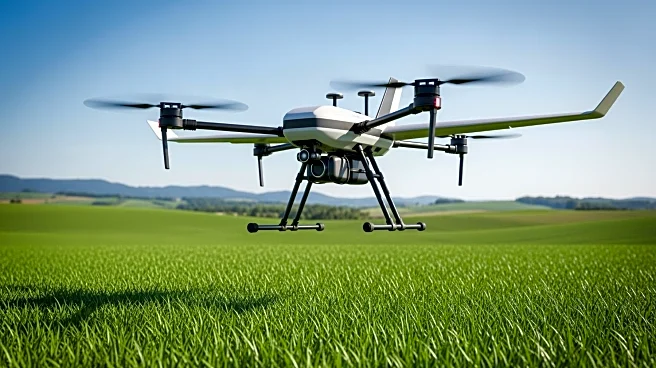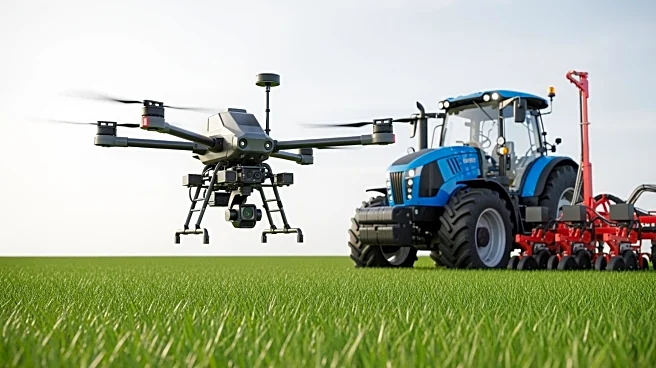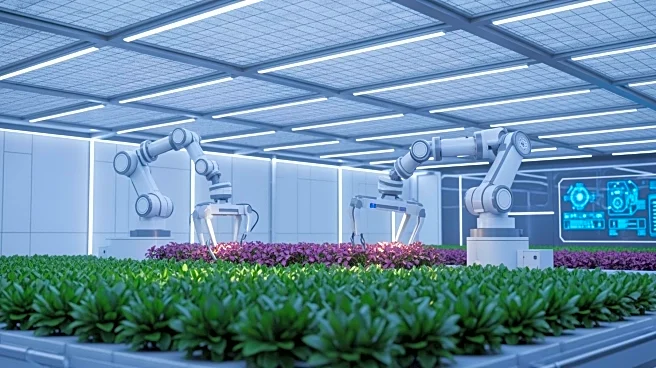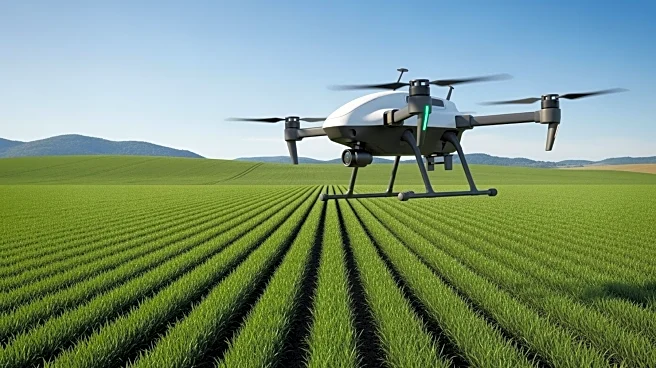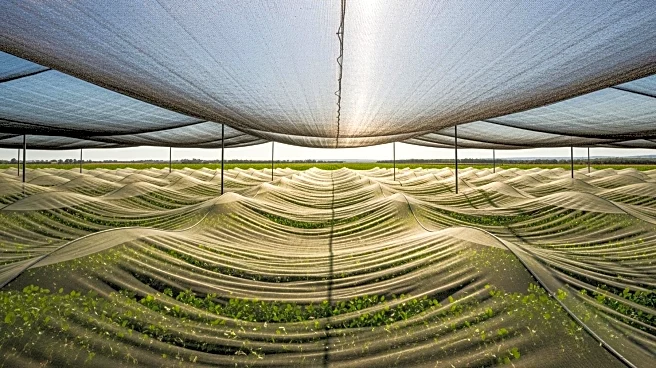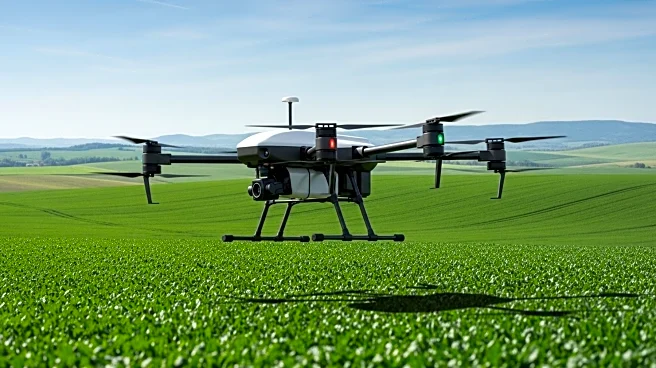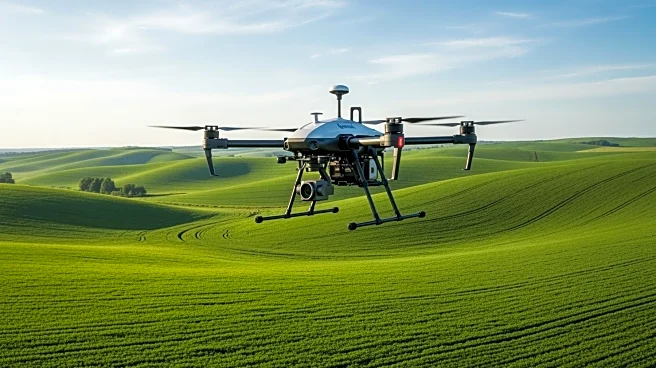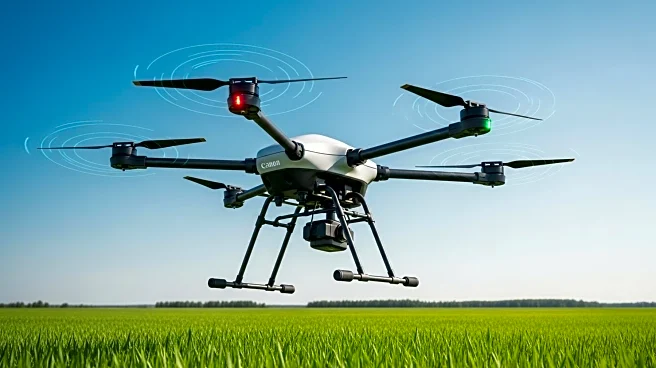What's Happening?
The global agriculture drone market is expected to grow significantly, with projections indicating a rise from USD 2.68 billion in 2025 to USD 80.94 billion by 2034. This growth is driven by a compound
annual growth rate of 40.6%, highlighting the increasing reliance on drones to enhance agricultural productivity and efficiency. North America, Europe, and Asia-Pacific are key regions contributing to this expansion, with North America poised to hold a substantial market share due to high-quality crop demand, increased labor costs, and automation in farming practices. The adoption of drones for applications such as spraying, seeding, and livestock farming is supported by regulatory openness and significant investments in agricultural technology.
Why It's Important?
The expansion of the agriculture drone market is crucial for modernizing farming practices and addressing the challenges of feeding a growing global population. Drones offer precision agriculture solutions, enabling farmers to optimize resource use, monitor crop health, and improve yields. This technological advancement is particularly important in regions facing labor shortages and an aging farmer demographic, as it supports increased automation and efficiency. The market growth also reflects broader trends in agricultural innovation, with drones playing a pivotal role in sustainable farming practices and environmental management.
What's Next?
The agriculture drone market is expected to continue its growth trajectory, driven by advancements in precision agriculture and GPS mapping technologies. Industry players are likely to innovate further in data collection systems and integrate them into business models, enhancing the functionality and adoption of drones in agriculture. As regulatory adjustments favor drone usage, both small and large farming operations are anticipated to benefit, particularly in disease and water management. The ongoing development of precision agriculture techniques and the integration of drones into farm management systems will likely support sustained market expansion.
Beyond the Headlines
The increasing use of drones in agriculture raises ethical and legal considerations, particularly regarding privacy and data security. As drones collect vast amounts of data, ensuring the protection of this information becomes paramount. Additionally, the shift towards automated farming practices may impact traditional farming communities, necessitating discussions on the balance between technological advancement and preserving cultural heritage. The long-term implications of drone adoption in agriculture also include potential shifts in labor markets and the need for new skill sets among farmers.
